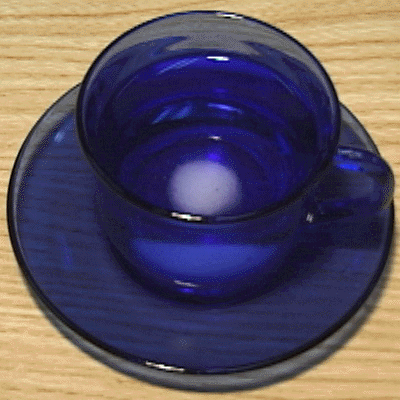 |
Ok, let's take a break here. When you pour sugar
into tea and stir it with your spoon, the leftover,
undissolved sugar gathers in the middle of the cup.
This is the work of the secondary flow. When the
spoon creates a vortex in the cup, pressure around
the edge of the cup becomes higher than that of the
middle, due to centrifugal force. However, near the
base, the current speed is reduced by viscosity, so
centrifugal force is not as strong. In the end, near
the base water acted on by the pressure gap is forced
to the middle of the cup. The layer at which
the work of viscosity is clearly evident is called
the
viscous boundary layer.
Tea that has passed through the viscous boundary
layer and lost momentum spreads from the middle of
the cup and stops the overall motion of the tea.
|